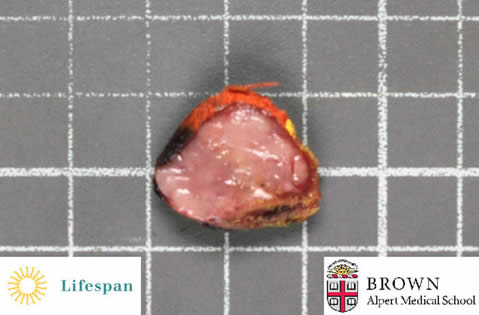
Alveolar Soft Part Sarcoma
A 2- year-old male was presented with base of tongue mass, initially diagnosed by his primary care physician as a mucocele. The mass was completely excised.

Grossly, the mass was pink to tan and firm, with some lobulations and appeared well circumscribed
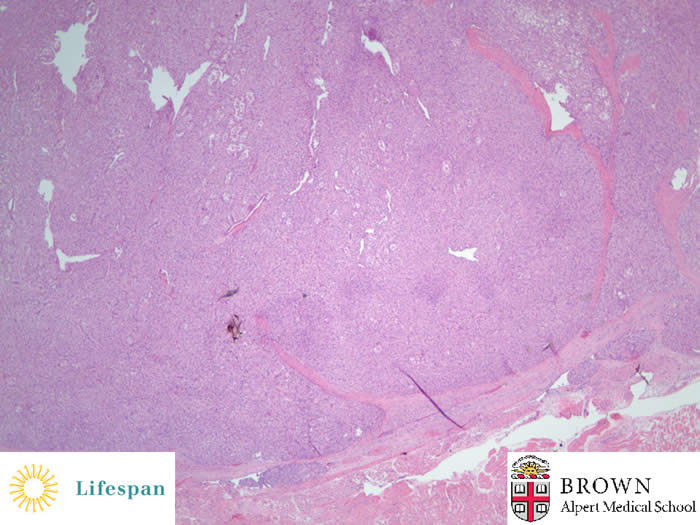
Microscopically, the lesion demonstrated an organoid pattern at low magnification separated by delicate connective tissue with sinusoidal channels.
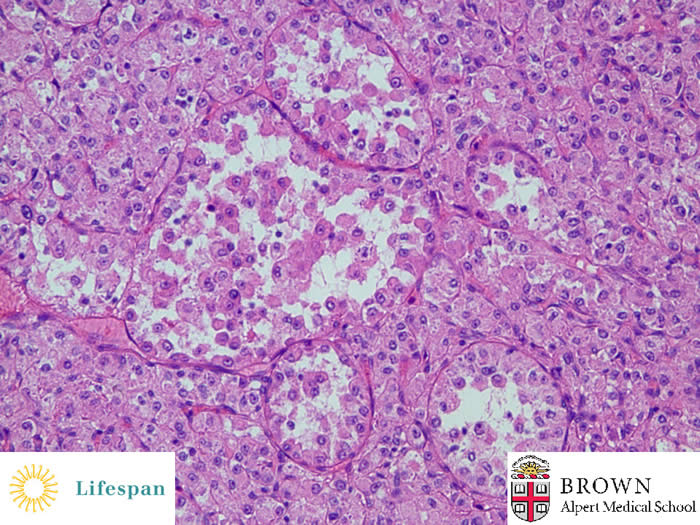
At higher magnification, nests of cells are noted, some of which are centrally discohesive demonstrating a pseudo-alveolar pattern.
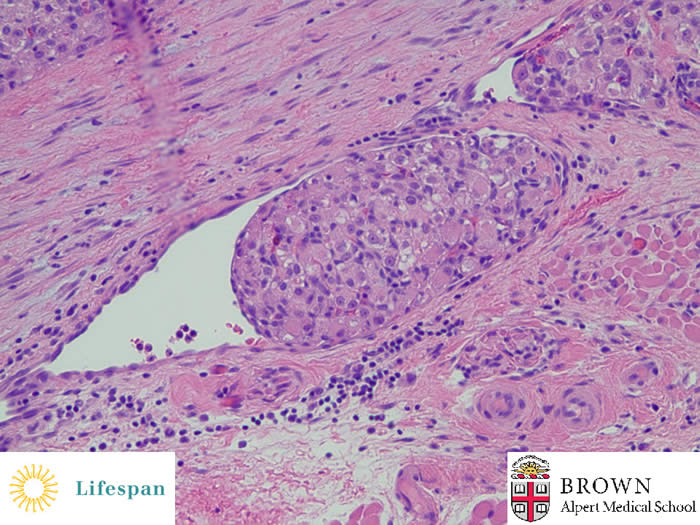
There was also vascular invasion noted.

Occasional PAS positive granules were identified but were negative for PAS-D.
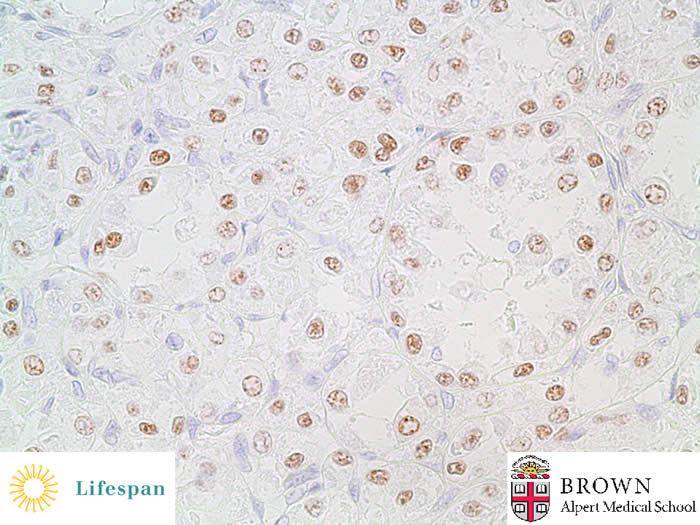
The lesion was positive for Translocation Factor E3 (TFE3).
Cytogenetic studies have identified a highly specific and sensitive translocation, t(X;17), for this lesion which results in the fusion of the TFE3 transcription factor gene with ASPL at 17q25. The ASPL-TFE3 fusion protein localizes to the nucleus where it may function as an aberrant transcription factor. Interestingly, the native TFE3 is known to be ubiquitously expressed but is not detectable by IHC in normal tissue. ASPL-TFE3 translocation is also one of the translocations carried by Xp17 translocation renal cell carcinoma.
Of note, the usual site of these tumors in children is the head and neck, especially the orbit and the tongue. In adults, they are usually seen in the extremities, especially the deep soft tissues of the thigh.
Contributed by Sonja Chen, MD
Back to Bone and Soft tissue section